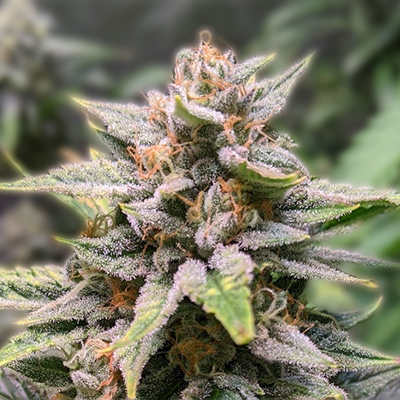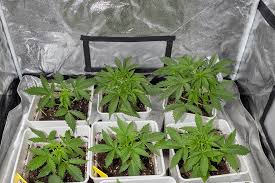
The Definitive Guide to Autoflower Seeds
Autoflower seeds are a revolutionary advancement in cannabis cultivation that allow growers to achieve results faster and with less hassle. Over the years, cannabis enthusiasts and cultivators have sought seeds that not only produce high-quality buds but also offer ease of growth. This led to the emergence of autoflowering varieties, which are gaining traction in the gardening community. In this article, we’ll delve deep into what autoflower seeds are, their advantages, how to grow them effectively, and some common myths surrounding them. If you’re looking to elevate your cultivation game, read on to learn more about autoflower seeds.
Understanding Autoflower Seeds
Autoflower seeds come from a unique genetic lineage that includes Cannabis ruderalis, a subspecies known for its ability to flower based on age rather than light cycle. This differentiates them from traditional photoperiod strains, which require specific light conditions to initiate flowering. Autoflower plants will typically begin flowering around 2-4 weeks after germination, regardless of the light they receive. This ability to flower independently of light conditions is one of the main reasons growers are turning to autoflower strains for both indoor and outdoor cultivation.
The Benefits of Autoflower Seeds
There are numerous benefits that make autoflower seeds an attractive choice for growers. Here are some key advantages:
- Speed: Autoflowering plants typically have a shorter life cycle, taking only 8 to 12 weeks from germination to harvest. This quick turnaround is perfect for growers looking to maximize their yield in a limited time frame.
- Ease of cultivation: Autoflower seeds are known for their resilience against various growing conditions, making them suitable for novice growers. They are less finicky about light requirements and can adapt to varying climates.
- Space efficiency: Autoflowering plants are generally smaller and more compact than traditional strains, making them ideal for indoor grows or limited spaces.
- Continuous harvests: With a staggering of planting, growers can have multiple harvests throughout the year, leveraging the fast-growing nature of autoflowering strains.

How to Grow Autoflower Seeds
Growing autoflower seeds isn’t as complicated as one might think. Here are some steps to ensure you successfully cultivate a rich yield:
- Select quality seeds: Choose reputable seed banks that offer feminized autoflower seeds. Quality seeds will reduce the likelihood of hermaphrodites and male plants.
- Prepare the growing medium: Autoflower plants thrive in a well-draining soil mix enriched with nutrients. Many growers prefer to use soil-less mediums like coco coir or hydroponic systems.
- Germination: Start by germinating your seeds in a damp paper towel or directly in the soil. Make sure to keep the environment warm and humid to promote sprouting.
- Lighting: While autoflower plants don’t require the same light cycles as photoperiod strains, it’s essential to provide them with 18-24 hours of light per day to maximize growth. Many growers choose to use LED lights that provide a balanced spectrum for all growth stages.
- Nutrients: Autoflowering cannabis tends to require less feeding than photoperiod strains. Focus on a balanced nutrient regimen during the vegetative stage, transitioning to bloom nutrients once flowering sets in.
- Watering: Avoid overwatering, as autoflower plants are susceptible to root rot. Check the moisture levels in the soil before watering to ensure you’re providing just the right amount.
- Harvesting: Monitor your plants closely to determine the right time to harvest. Check the trichomes’ color; clear trichomes indicate it’s too early, while amber trichomes suggest the plant is ready for harvest.
Common Myths About Autoflower Seeds
As with anything gaining popularity, there are several myths surrounding autoflower seeds. Debunking these misconceptions is crucial for new growers to make informed decisions:
- Myth 1: Autoflower seeds yield less. This is not necessarily true; while some autoflower strains may have lower yields than their photoperiod counterparts, many modern autoflower hybrids are bred for larger yields and can be just as fruitful.
- Myth 2: Autoflowers are less potent. This myth stems from earlier autoflower varieties with lower THC content. Today, many quality autoflower strains have been developed that rival traditional strains in potency.
- Myth 3: Autoflower plants are low quality. Again, this myth is a remnant of older generations of autoflower genetics. Modern hybrids are bred for quality, flavor, and therapeutic benefits.
Conclusion
Autoflower seeds represent a significant step forward in the world of cannabis cultivation. Their adaptability and rapid growth cycle make them an invaluable asset for growers of all experience levels. The misconceptions surrounding them are being washed away by the continuous improvements in breeding practices that produce high-quality, potent strains. If you’re considering diving into autoflower cultivation, take the plunge. With the right preparation and care, you’ll be rewarded with a fast, fruitful yield that meets your needs. Happy growing!